

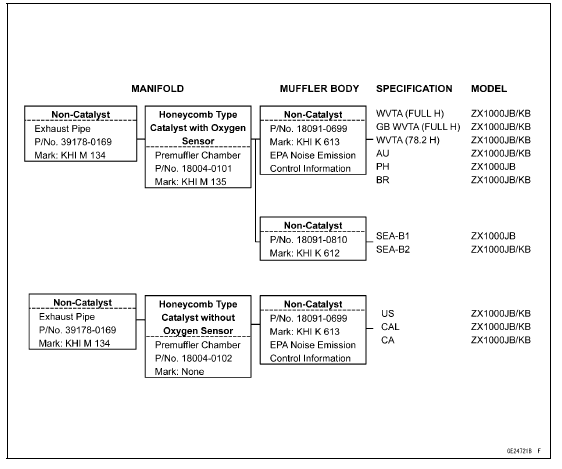
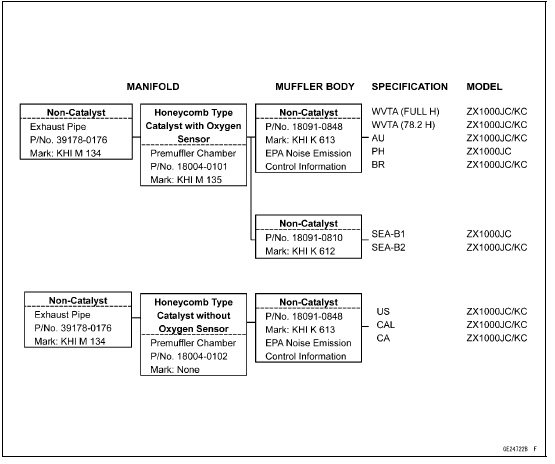
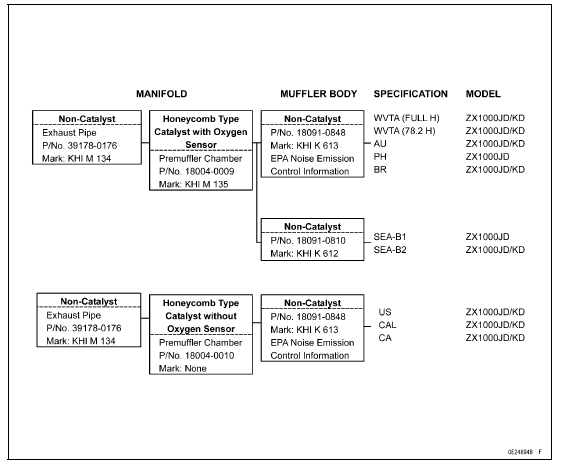
Exhaust Pipe Mark Position [A]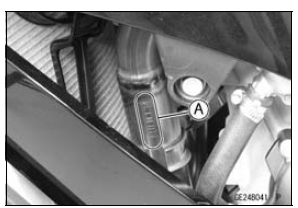
Premuffler Chamber Mark Position [A]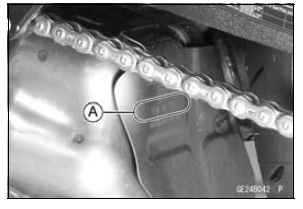
Muffler Body Mark Position [A] 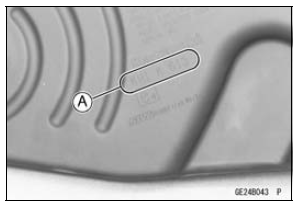
Premuffler Chamber [A] with Hole [B] for Oxygen Sensor [C]
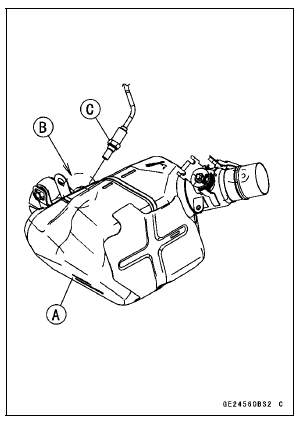
Honeycomb Type Catalyst Position [A]
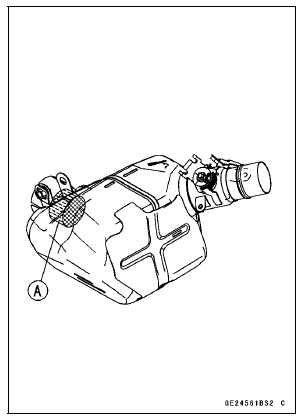
Specifications
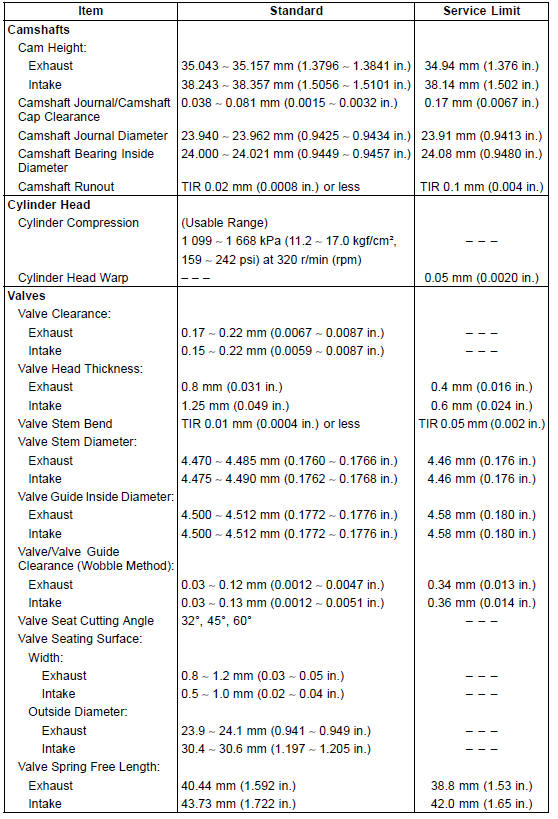
 Exploded View
Exploded View Special Tools and Sealant
Special Tools and SealantCylinder Head Warp Inspection
Clean the cylinder head.
Lay a straightedge across the lower surface of the cylinder
head at several positions.
Use a thickness gauge [A] to measure the space between
the straightedge [B] and the head.
Cylinder Head Warp
Standard: – – –
Service Limit: 0.05 mm (0.0020 in.)
...
Fuel Tank Installation
Note the above WARNING (see Fuel Tank Removal).
Run the hoses correctly (see Cable, Wire, and Hose Routing
section in the Appendix chapter).
Check that the dampers [A] are in place on the fuel tank.
If the dampers are damaged or deteriorated, replace
them.
If the fuel tank brack ...
Spark Plugs
The standard spark plug is shown in
the table. The spark plugs should be
replaced in accordance with the Periodic
Maintenance Chart.
Spark plug removal should be done
only by a competent mechanic following
the instructions in the Service Manual.
Spark Plug
A. Plug Gap ...